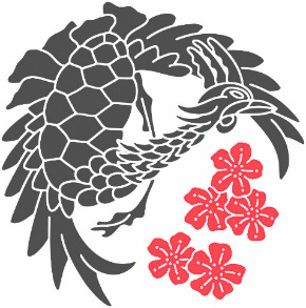The Japanese have long believed that when a phoenix descends from the heavens, a new era of peace and prosperity will begin (1). On March 31, 1893, Japanese and Americans gathered together in the heartland of America, on the Wooded Island in Chicago, to prepare for the opening of the World’s Columbian Exposition (2). They gathered to celebrate the arrival of a Phoenix that would take the form of a pavilion (Fig 1), which they hoped would teach the world about Japan, and, in turn, would lead us to learn about each other and ourselves.
For the past 120 years, enduring through the highs and lows in the U.S.-Japan relationship, Chicago has maintained the site of the Phoenix Pavilion on the Wooded Island as a place for Americans to experience Japanese culture (FN3). In the 1930s, an extraordinary Japanese garden was added to accompany the Phoenix Pavilion. Since the Pavilion and garden were lost following World War II, the garden has risen again from the ashes to become one of the most important sites in the United States that reflects both the past and future of U.S.-Japan relations.
In 2013, to commemorate the 120-year history of the “Garden of the Phoenix,” 120 cherry blossom trees are being planted to celebrate the mutual understanding and respect enjoyed today between these two nations. The newly planted trees will also commemorate the two nations’ hopes to begin a new era of even greater cooperation. As they grow in size and number to be enjoyed each spring in the Japanese tradition of hanami, or cherry blossom viewing, the trees will inspire new opportunities for cultural exchange and learning for generations to come.
